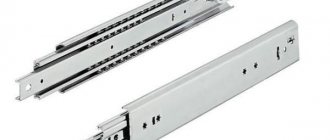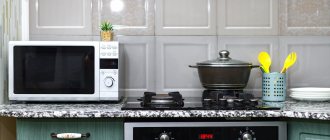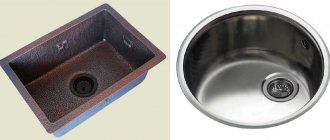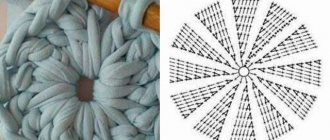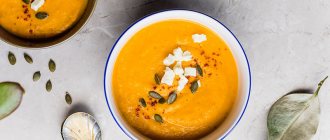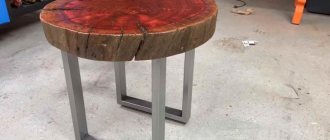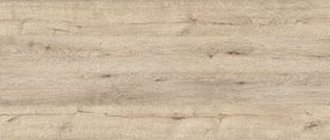Coffee grinding methods
A coffee grinder is often used to grind coffee.
Hard coffee beans are used to crush them into a homogeneous mass using durable devices with sharp knives. When electrical household appliances were not well known and available, mechanical ones came in the form of a coffee grinder. But not specially created for grinding, but ordinary kitchen utensils for every average family. For example, a meat hammer. Before grinding the grains, they are placed in a bag so that they are not scattered around the kitchen. Easily accessible devices that replace a coffee grinder include a meat grinder. An indisputable advantage over a hammer is the uniformity of grinding. But still, this method is quite complicated and takes a lot of time. A manual coffee grinder is the best option among mechanical devices for grinding coffee.
Modern technology makes life much easier, just like a coffee grinder uses an electric mixer and blender. Everyone has these devices in their kitchen; they can grind beans, and many people don’t bother buying a coffee grinder. And it’s not surprising, because a good specialized device for grinding grains costs a lot of money. It is worth noting that a blender as a coffee grinder is the best option to get a high-quality base for preparing your favorite aromatic drink.
Spice mill
The spice mill is designed for grinding spices. The design and volume of the mechanical unit are different, but this tool is usually not designed for large batches of product. In a mill you can grind a small amount of grains, which is enough for one brew. As in the case of a meat grinder, for better results the operation is repeated several times. The grind will be medium.
Hand mills are most often made of wood, which absorbs odors well. The aroma of spices is unlikely to spoil the coffee, but you will no longer be able to enjoy the pure taste of a rare type of Arabica or Robusta. In addition, after grinding flavored varieties, the mill will be very difficult to clean.
Disadvantages of using kitchen appliances:
- danger of overheating;
- failure of cutting parts;
- reduced service life;
- persistent odor that is difficult to get rid of.
Comparison of blender and coffee grinder
A coffee grinder is a specialized device used to grind coffee beans to a fine state. There are two types of coffee grinders - manual (work with mechanical scrolling) and electric (work from the mains).
There are also burr and knife grinders. Burr coffee grinders are based on grinding coffee between two metal plates, similar to the principle of a millstone. With this grinding method, you can achieve the desired degree of grinding. Therefore, this coffee is suitable for making cappuccino, espresso or latte in coffee machines and coffee makers. A blade coffee grinder allows you to obtain ground coffee beans using sharp, powerful, fast-rotating knives. They are located at the bottom of the bowl, which allows you to capture all the grains. The degree of grinding can be adjusted using the duration of operation of the coffee grinder - the longer it works, the finer the result. This method of grinding coffee beans is perfect for brewing an exquisite aromatic drink in a Turk.
Avoid grinding hard foods in a blender
A blender is used to grind, cut, and mix products until they have a homogeneous consistency. It is mainly used for preparing children's soups, purees, as well as minced meat, sauces, and various drinks. The properties of this device also include slicing vegetables and fruits. Many blenders have the function of grinding solid products (ice, cereals, nuts). That is why, using a blender as a coffee grinder, you can achieve the desired result.
The peculiarity of using a blender as a coffee grinder is that its structure is in many ways similar to a device specially designed for this (same bowl, knives, motor). Unlike a blade coffee grinder, the blades of a blender are placed higher and have a shorter length. This does not allow the product to be crushed evenly and in order to obtain a homogeneous mass, the device must be shaken from time to time during operation.
Not all blenders have the function of grinding solid products. Therefore, when choosing such equipment, those who want to combine two devices into one should pay attention to this.
Important! Frequently using the blender to grind hard foods can negatively affect its performance and shorten its service life.
Types of grinding
Their purpose depends on how finely the grains are crushed. Here are the types of grinds you can achieve without a coffee grinder:
- Coarse grind (grains about one millimeter, suitable for a French press or coffee pot)
- Medium grind (small granules, for drip coffee makers)
- Fine grind (fine granules, suitable for Turkish coffee makers, geyser coffee makers, coffee machines)
Ultra-fine grinding is also possible (powder state, for cezve or Turkish sand), but this cannot be achieved without a coffee grinder.
Differences between an immersion and a stand blender
There are two types of blenders: immersion and stationary. The first type of device has a handle to which a special attachment with knives is attached. When immersed in the bowl, you need to select the desired speed and start grinding (mixing) the product at your discretion. The bowl must be closed, otherwise any solids will jump out. An immersion blender has small blades, so from time to time you will have to remove particles of ground coffee from them and completely clean the device.
A stationary blender is a bowl with a lid, at the bottom of which there are sharp knives. This container is placed on a special stand, inside of which the motor is located. Different speed modes allow you to select the optimal degree of grinding of products. The disadvantage of this type of device when grinding coffee beans is that the knives are designed in such a way that they cannot catch the bottom of the bowl. This will not allow the product to be ground evenly. Another difference between an immersion and a stationary blender is that the bowl of a stationary device always comes with a lid.
Meat grinder
If you don't have a blender at hand, an electric or manual meat grinder can serve as an alternative. In this case, it is difficult to obtain a fine grind, but this type of coffee is suitable for brewing.
The inside and knives of the meat grinder must first be washed to eliminate the smell of onions. The first time you grind, the particles may be too large. Pass the coffee through the grinder several times to achieve a finer structure.
Attention! Raw meat and fish may contain pathogenic microorganisms. Before starting work, the internal surface and parts of the device should be disinfected and do not brew ground coffee in a French press or drip coffee maker.
Features of a blender-coffee grinder
Many housewives use a blender as a replacement for other kitchen appliances (mixer, grater, meat grinder, coffee grinder). The main thing is not to overload the device and not to use it very often.
In order for the device to be able to grind coffee beans, it must have special mill attachments. This attachment allows you to grind not only coffee, but also sugar, cereals, nuts and other hard products, which adds versatility to the device.
Rules for grinding coffee in a blender
To get a high-quality starting product when using a blender as a coffee grinder, you must adhere to some rules:
- It is important to ensure that there is a lid on the bowl where the coffee will be ground. Some immersion models do not come with special bowls with a lid (you won’t be able to grind coffee this way).
- Wash the components of kitchen appliances thoroughly after grinding grains. To ensure that the taste of the coffee does not transfer to other dishes, or vice versa, it is necessary to thoroughly clean the device after each use.
- To prevent coffee from having a burnt taste, grind the beans at low speed. The high power of the device can heat and scorch the grains, which will ruin its taste characteristics.
- From time to time it is necessary to shake the device while grinding so that the coffee is ground evenly.
- The degree of grinding depends on the operating time of the device, so if you need to grind the product to the state of flour, you will have to grind longer.
Using a Hand Blender
A special feature of a hand blender is that you can control the process yourself. A hand-held device immersed in a bowl should have an attachment with the sharpest and strongest knives. There should not be a lot of grains in the bowl, otherwise it will be more difficult to grab them. When grinding, it is important not to let the device heat up. It’s better to take short breaks (work for a minute, rest for a minute). If the device overheats, you must leave it alone for 15 minutes. Small blades make it much more difficult to clean up coffee residue in a handheld immersion blender.
Using a Stand Blender
A stationary blender is primarily designed for chopping soft foods. But special attachments with strong, sharp, double blades allow it to become a replacement for a coffee grinder. It is important to stir the contents from time to time while grinding or shake the bowl. Just like in an immersion blender, you must not overheat the mechanism. It is better to use at low or medium speed and take breaks from time to time. Grinding solid products should not be carried out frequently, as this will cause the device to malfunction.
Useful tips
The mandatory presence of a lid has already been mentioned.
It is also important to choose the right knives. The nozzle must have at least 4 blades and double knives. The grinding result depends on this. Even a powerful unit will not cope with the task if the knives are unsuitable. It is also important that the blades are sharp. Before use, the equipment is thoroughly washed. There should be no foreign products or odors inside the bowl. In addition to a blender, a mechanical mill or a regular rolling pin is suitable for grinding grains.
A blender can handle grinding coffee beans quite well. But you cannot always use it for such purposes. It can help out in an emergency, but cannot be a regular replacement for a standard coffee grinder. If used frequently for other purposes, the device will simply stop working. Therefore, grinding must be done extremely carefully.
Cooking methods
Even though a blender helps in preparing traditional dishes, it can still be used to brew delicious coffee. Take a small amount of beans and place them in a bowl. Close the bowl and press the grind button. You should grind the grains, shaking the bowl periodically. Create your own coffee masterpiece from the resulting powder.
Making amazing iced coffee relies on a coarse grind. To do this, you need to brew coffee in a Turk in a ratio of 2-3 teaspoons of powder per 60 ml of water. Cool the resulting drink. In a blender, blend brewed coffee, a small amount of milk and a few ice cubes until light foam appears.
Another option for preparing a drink from coarsely ground powder is French coffee. Boil the ground powder in a ratio of 6 teaspoons of coffee to 4 cups of water. Strain the resulting product and add a pinch of salt and sugar to taste.
To obtain the richest coffee taste even with coarse grinding, you should select the right ingredients. Do not use sterilized milk. It leaves a peculiar aftertaste and interrupts the aroma of the drink.
The fat content of milk is also of great importance. If the preparation of most dishes requires full-fat milk, then for coffee, which contains fatty esters, ultra-pasteurized milk with a fat content of 3-3.5% is quite suitable.
If you find yourself without a coffee grinder, this is not a reason to deny yourself your favorite drink. You can brew great drinks from coarsely ground coffee.
